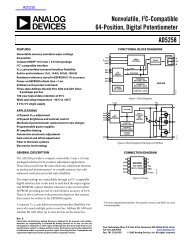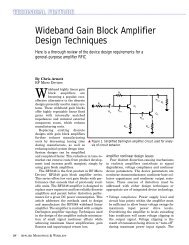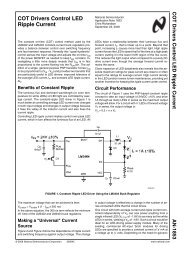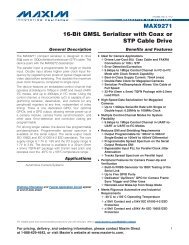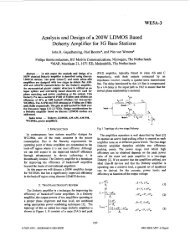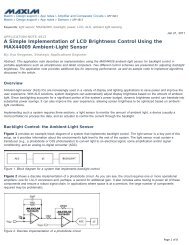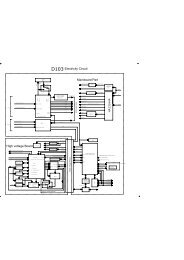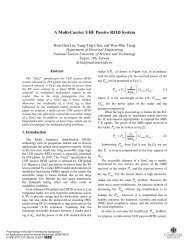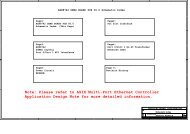3-Phase BLDC Motor Sensorless Control Using MC56F8013
3-Phase BLDC Motor Sensorless Control Using MC56F8013
3-Phase BLDC Motor Sensorless Control Using MC56F8013
- No tags were found...
Create successful ePaper yourself
Turn your PDF publications into a flip-book with our unique Google optimized e-Paper software.
System Blocks ConceptThe Freescale MC56F801x family offers an excellent on-chip ADC module. Its unique feature setprovides automatic detection of the signal crossing the value contained in the ADC offset register.Back-EMF zero crossing detection can be split into two main tasks:• ADC zero crossing checking• ADC zero crossing offset setting to follow the variation of the DC-bus voltage3.3.3.1 ADC Zero Crossing CheckingZero crossing for position estimation is detected using the ADC.As stated, the ADC has individual ADC offset registers for each ADC channel. The value in the offsetregister can be subtracted from the ADC output. The final result of the ADC conversion is then two’scompliment data. The other feature associated to the offset registers is the zero crossing interrupt. Thezero crossing interrupt is asserted whenever the ADC conversion result changes the sign compared tothe previous conversion result. Refer to the manual for detailed information. Therefore, this applicationuses an ADC zero crossing Interrupt to get the back-EMF zero crossing event.3.3.3.2 ADC Zero Crossing Offset SettingActually, the zero crossing is detected, if the phase voltage of the non-fed phase changes it sign, whenthe offset value is set to half of the DC-bus. Therefore, the ADC offset register must be set to one half ofthe DC-bus voltage value. This update must be continuously performed, to reflect the DC-bus voltagevariation caused by the ripple of DC-bus voltage. This is valid at the following conditions:• <strong>Motor</strong> phases are symmetrical (all 3-phases have same parameters)• All hardware dividers for the ADC of the DC-bus voltage and all 3-phase voltages, have equal ratioIn this application, to compensate the differences between hardware dividers of phase voltagemeasurements, a calibration sequence is followed. This calibration is performed only once, just after thefirst alignment of the motor. During calibration, alignments are performed for each phase and the thirdphase is measured to obtain the offset value. Ideally, the value read from the third phase must be equalto half the DC-bus voltage, but because of component tolerances, if differs from 50%. When thecommutation is running, these measured calibration values are multiplied by the measured DC-busvoltage and the ADC offset registers are updated.NOTEIn the application software, use the #define directives in bldcadczcconfig.hfile to enable or disable the calibration feature.3-<strong>Phase</strong> <strong>BLDC</strong> <strong>Motor</strong> <strong>Sensorless</strong> <strong>Control</strong> using <strong>MC56F8013</strong>, Rev. 0Freescale Semiconductor 31


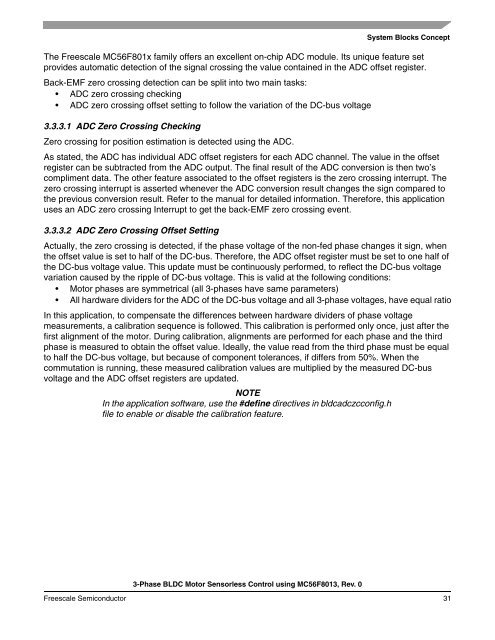
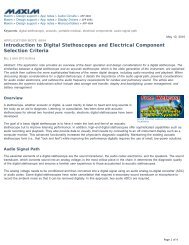
![P-CAD EDA - [Sheet1]](https://img.yumpu.com/49470492/1/190x115/p-cad-eda-sheet1.jpg?quality=85)
